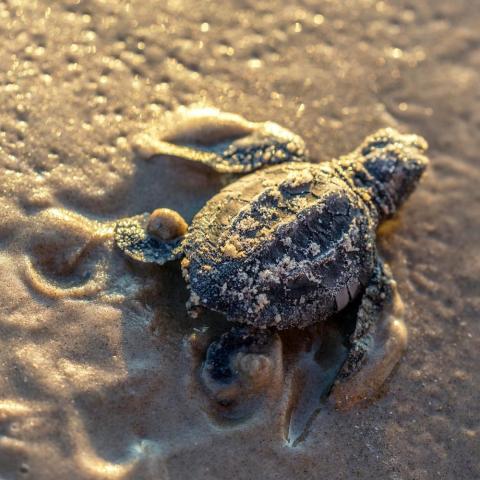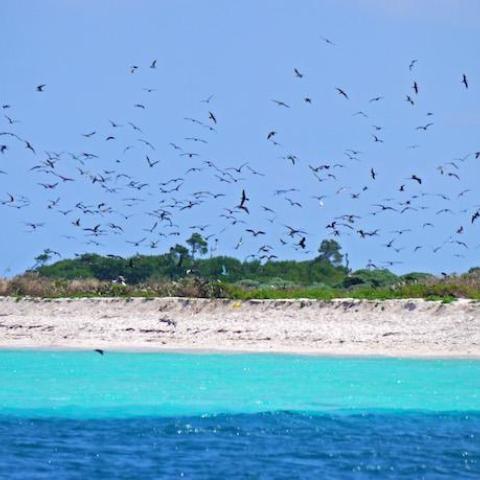
Over the last decade, the explosion of books related to birding has seen the formation of a subgenre focused on the GISS concept. GISS (typically pronounced jizz) is an acronym for General Impression, Size, and Shape. This refers to the method of identifying a bird by visible features other than the color and markings. It’s how most seasoned birders make split-second identifications in the field. Over time, GISS has come to be a catch-all term for the holistic approach to bird identification where distribution, time of year, habitat, and behavioral considerations blend with size and shape (and good old fashioned field marks!) to make a bird knowable in an instant.
Nearly a decade ago, Pete Dunne’s Essential Field Guide Companion was published, finally putting into print the wisdom of this birding wizard on almost every bird the United States and Canada. There wasn’t a single photograph or drawing in the book, just a whole lot of words describing what photos can’t tell you about the birds in your field guide. About that same time, The Shorebird Guide made its appearance, giving a notoriously difficult group of birds the holistic treatment. This wasn’t a new way of birding, so much as a new attempt to bring the methodology to a public that was familiar only with the old school field guides. Given that Pete Dunne and the Shorebird Guide authors Kevin Karlson, Michael O’Brien, and Richard Crossley were all denizens of Cape May, New Jersey, you can make a case that this style of birding and genre of bird guides could be called the Cape May School.
This brings us to the waning days of 2015 and two exceptional birders who aren’t from Jersey – George Armistead and Brian Sullivan. Their simply and aptly titled Better Birding is the latest GISS/Cape May/holistic guide to hit the market. At first I wondered if we needed another tome in this genre, but after reading it cover-to-cover I’m left hoping there’s a sequel.
The first 27 pages of Better Birding should be required reading for students of Birding 101. The authors don’t shy away from any topic, no matter how technical (taxonomy and the species concept) or controversial (use of recordings in the field.) That they’ve distilled most of these topics down to just a handful of paragraphs under each heading is an achievement worthy of congratulations. Tens of thousands of words are spilled in Facebook groups as people try to explain some of these concepts, but now we can just send everyone to Better Birding.
The introduction closes with “Why Birding is Cool.” If you’re buying this book, you’ve probably already figured that part out, but if not, you’ll just have to see what Armistead and Sullivan have to say. (They do mention that there’s an occasional annoying person that might make birding less than pleasant, but the only time I’ve birded with either author was last September after this book was largely finished, so I don’t think this was about me.)
The bulk of Better Birding is an identification aid for bird species. It’s broken into groups of birds that present identification challenges. Large shorebirds, small wrens, and black corvids are some of the chapter headings. There are 24 such groups, selected subjectively by the authors, though they admit it may seem arbitrary. It does, at times, but I see the reasoning behind most of the inclusions and omissions. A group was selected for inclusion if it presented an opportunity to build core birding skills, needed a fresh treatment, or was simply interesting enough to round out the book.
The small wrens offer a great example. Neophyte birders tend to have a terrible time with some of the wrens, but experienced birders rarely give their identification a second thought. Shape, size, behavior and habitat are all essential for identification of a wren that isn’t singing. Several pages full of color photos illustrate the differences that go from invisible to subtle to obvious as you gain experience. If someone in my neck of the woods truly studied this section for an afternoon and followed up with some field practice, there is no way they’d misidentify a House, Marsh, Sedge, or Winter Wren that gave any kind of a decent look.
Each section has a “Hints and Considerations” subsection with bullet points that shouldn’t be missed. For example, Dry Tortugas National Park is the only area in the United States where Black Noddy (a tropical tern) is regularly seen. In other words, if you’re at Padre Island National Seashore, don’t try to turn a tern into a Black Noddy. As the authors say in the introduction, “when you hear hoofbeats, expect horses, but consider zebras.”
My only complaint with the book is that the inclusion of some birds under a heading to the exclusion of others might be confusing to an inexperienced birder. The “Waterbirds” section includes loons but omits grebes. Now, it takes only a couple trips to the shore to learn the difference between loons and grebes, but someone just starting out may try to turn grebes and mergansers into loons if they focus on this loon section with tunnel vision. It’s important to realize that the treatment of loons in this book is as much about training the birder to look at structure of bill and body in all birds as it is about identifying loons. Obviously, every bird wouldn’t fit into 320 pages.
This book is best used as a learning and training guide. Read the introduction, then pick a group and devour it. Don’t wait until you see a loon and then sit down with Better Birding. The time for that was before you went out to the seashore. I think when used proactively in that manner, this is an invaluable resource for everyone from the brand new birder to seasoned veterans.
The writing is clear, concise, and witty when it needs to be. The photographs couldn’t be any better. In short, I can’t think of a good reason not to have this book, provided you have at least one traditional field guide in your arsenal already.
And. finally, I think Armistead and Sullivan must have read some of my previous reviews. The one complaint I have with almost every identification guide book is that I wish there were at least a few natural history tidbits thrown in. Better Birding doesn’t disappoint in that regard, with frequent natural history sidebars. I have to say many of those included information that was new to me. Knowing that Winter Wrens are typically monogamous while Marsh Wrens are not may not help in their identification, but it helps in our quest to truly know the bird. To me, that’s what birding’s all about.



 Support Essential Coverage of Essential Places
Support Essential Coverage of Essential Places







Add comment